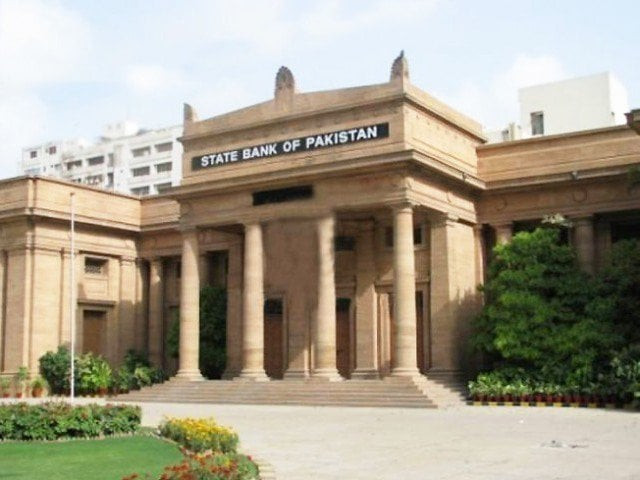SBP issues strategy to counter fake note menace
Automated cash-processing functions in offing as well

PHOTO: EXPRESS
The State Bank of Pakistan (SBP) has issued a strategy to automate banks’ cash-processing functions by January 2017, which will curb the use of counterfeit currency in the economy.
Speaking at a ceremony at the SBP on Tuesday, SBP Governor Ashraf Wathra said the central bank is also in the process of installing state-of-the-art, high-speed banknote-processing machines at SBP Banking Services Corporation (BSC) Karachi and other important regions across the country.

He added that some advanced security features are also being added in the higher denomination currency notes of Rs500 and above and that these notes will be available for issuance by the third quarter of 2016.
Counterfeit notes: SBP to bring new security features in currency notes
Pakistan in high ranks
Statistics show that Pakistan has a cash-dominated economy. The annual average growth in currency in circulation in Pakistan is relatively high. As opposed to 6.5% in the United States, 9.6% in South Africa, 7.1% in Australia, Pakistan’s annual average growth in currency in circulation stands at 14.7%.
Currency in circulation as a percentage of GDP is a measure that reflects the scale of the informal economy: a higher ratio means a larger informal economy and a heavier dominance of cash.
According to the SBP annual report, this ratio is 9.4% in Pakistan, which is the second highest after India (10.6%). It is 3.4% in Sri Lanka, 3.7% in Malaysia, 5.9% in Bangladesh and 7% in the Philippines.
Similarly, the ratio of broad money (M2) as a percentage of GDP is another proxy that helps determine the size of the undocumented economy. A lower ratio of M2-to-GDP reflects a larger informal economy. This ratio is 41.2% in Pakistan as opposed to 62.7% in Bangladesh and 76.7% in India.

Counterfeit notes
In the presence of a large cash-dominated informal economy, it is natural to assume that counterfeit notes exist in a large quantity in Pakistan. However, the SBP governor said the share of fake notes in the total currency under circulation in Pakistan is comparatively smaller than global and regional averages.
“The average of fake notes in Pakistan is about two to three in one million notes in circulation. In contrast, the average in the South Asian region is six to seven per million notes,” Wathra said while speaking to reporters.
As part of its campaign “Rupay ko Pehchano,” the SBP has developed and launched a total of five videos on the security features of currency notes. It has developed one video for Rs5,000, Rs1,000 and Rs500 notes each while another video sheds light on the security features of Rs10, Rs20, Rs50 and Rs100 notes. One video highlights the security features of all currency notes in circulation.
He said the SBP has adopted a three-pronged strategy to combat counterfeiting.
Rule of law, transparency and governance
It involves enhancing the security features of currency notes to make counterfeiting even more difficult, automation of the cash-processing function in the banking system to ensure that no fake note passes through the banking system, and creating awareness among the general public about security features of currency notes to help them differentiate between genuine and fake ones, he said.
Published in The Express Tribune, December 23rd, 2015.
Like Business on Facebook, follow @TribuneBiz on Twitter to stay informed and join in the conversation.


















COMMENTS
Comments are moderated and generally will be posted if they are on-topic and not abusive.
For more information, please see our Comments FAQ